The Ili-ay Cordillera: A village in the city
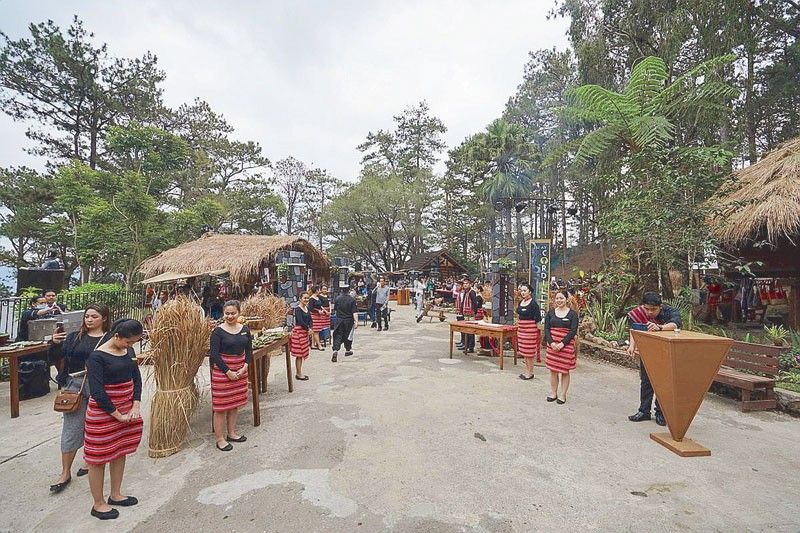
MANILA, Philippines — Flowers bloom and plants flourish within the beautifully manicured gardens, with a soothing fountain overlooking a green valley at The Manor at Camp John Hay – and, starting this month, an indigenous community has settled in a significant corner of the grounds.
The Ili-ay Cordillera, a Kankanaey phrase which literally means Cordillera Village – has been painstakingly transported from the Cordilleras to the hotel to give tourists and visitors a true Cordillera experience.
For the next few months, the township will serve as the central venue for both traditional art and crafts exhibitions and farm-to-table fresh produce from neighboring farmlands, with weekend cultural performances, film showings, lectures and workshops highlighting the lifestyle of the peoples of the mountain ranges.
To kick off the celebration, a parade of Cordilleran men in bahags – with their headgear reflecting their status within the clan – with gongs of several sizes and other traditional wind instruments made their way from the lobby and the hallways, across the gardens, ending at the new settlement, where a tribal shaman waited on a makeshift stage by a raging welcoming bonfire.
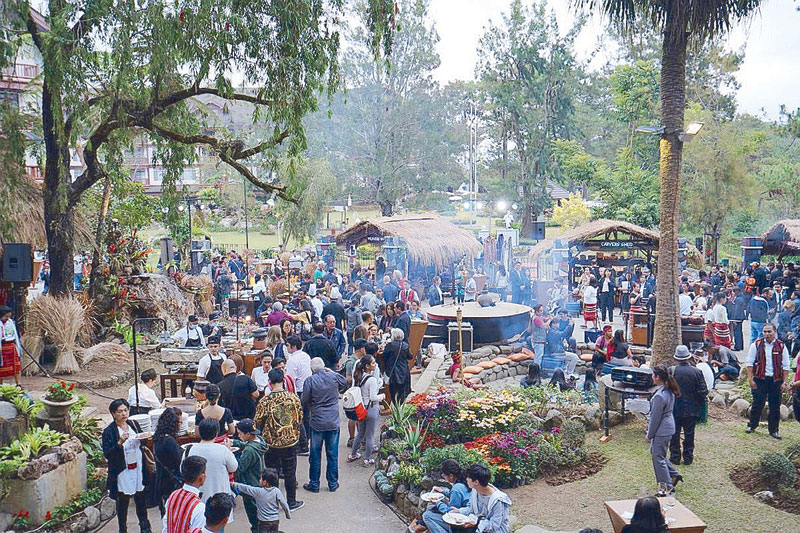
The bustling Cordillera Village
At the brief solemn ritual invoking the gods for blessings, the elder cautiously poured tapuey or native rice wine into a solitary coconut husk bowl, which was then passed around among the organizers and a portion of the captivated crowd as a toast, while late afternoon sun slowly descended and gave way to the young evening.
The Manor at Camp John Hay general manager Ramon Cabrera, in his message, said, “Beyond the remarkable display of Igorot ingenuity and craftsmanship, performances of musicians and performers in the coming months, the wonderful stories to be shared by the local artists, beyond that unique Cordillera exposure that await visitors to the village, there are so many other aspirations that we aim to realize with and in this village.”
The entire Ili or village has six sections.
We marveled at the Ifugao hut, traditionally put together with utmost precision without the aid of a single nail. This was built by 62-year-old Apilis Mahiwo, a seasoned carver who worked on VOCAS, the community art space of National Artist for Film Kidlat Tahimik.
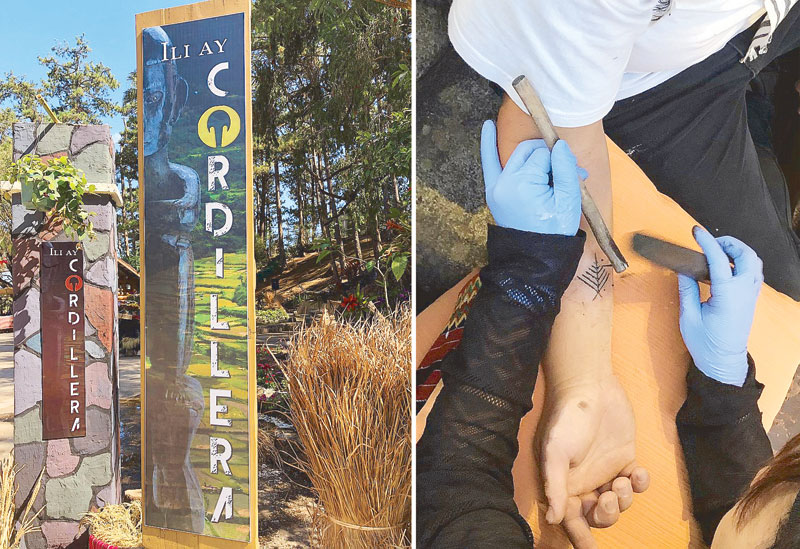
Get yourself a tattoo by a local artist.
Guests stood in awe at the architecture, showcasing engineering feats passed on through generations – yes, the houses on stilts but not on water – adorned by wood carvings created by gifted hands.
This instantly brought memories of a similar home from one of the mountain provinces that was sadly falling apart but was saved by generous funds generated through the initiative and encouragement of the then-Philippine Ambassador to the Court of Saint James Jesus Tambunting.
The deconstructed hut, with each piece meticulously numbered, was carefully transported to the United Kingdom. The residence was then reassembled by experts – still with no nails whatsoever. It is now on permanent display in a prized portion of the British Museum in London, one of the most prestigious depositories of testimonials and relics of bygone eras’ heritage, tradition and custom, arts and culture.
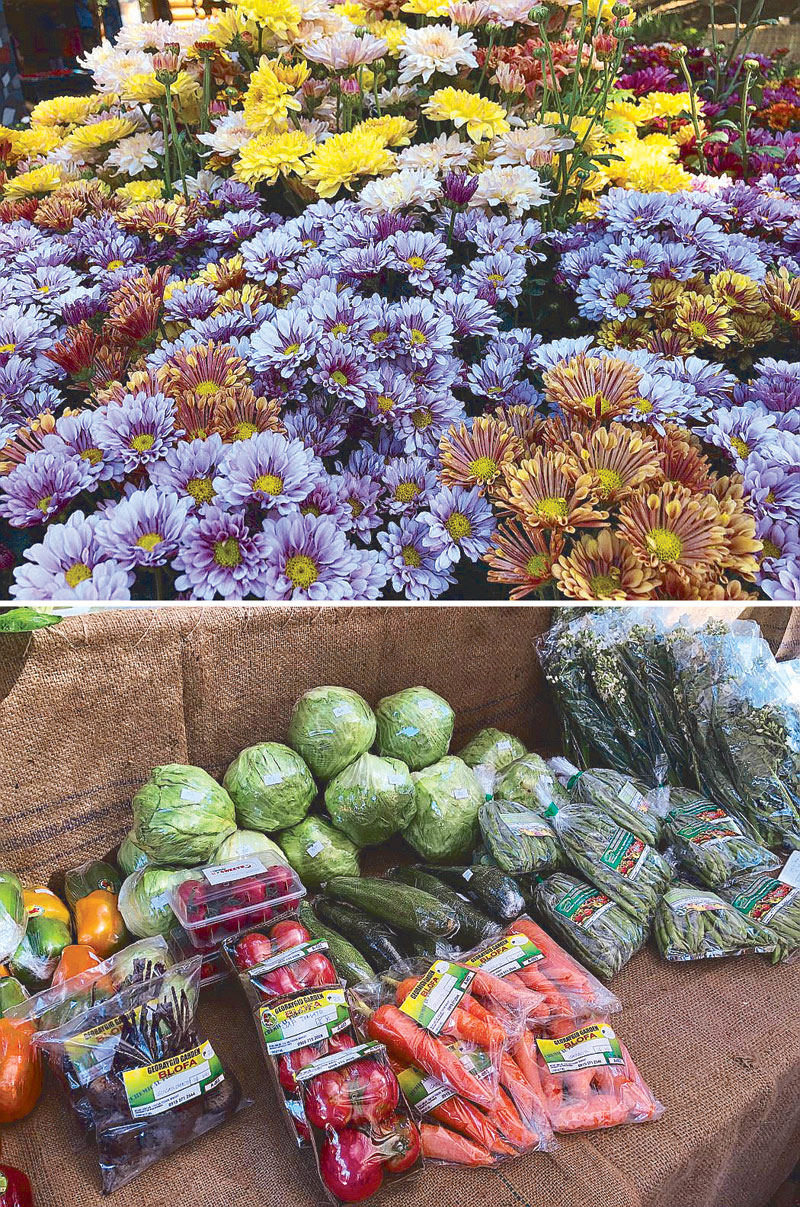
Flowers and vegetables from the highland farms are sold at the Farmers Market.
“Today’s single hut,” proudly declared Cabrera, “is envisioned to be the pioneer of a cluster of similar meticulously designed and measured segments, much like a jigsaw puzzle.”
At The Smokehouse, a temporary brick and cement slow-cooking pit, we spotted slabs of meats hanging from huge hooks. Smokehouse specialist-cum-chef known only as Pil-od of Farmer’s Daughter Restaurant and chef Chavi Romawac of MyChef Romawac Catering Services were busy chopping up salted dried pork and chicken, stirring pots of meat drowned in spices and herbs, and serving courses of etag or cured pork, pinikpikan or chicken stew and pinuneg or blood sausages.
On the side, there was a display of deadly handmade knives with intricate hilts and sheaths, specially forged by specialist local blacksmiths.
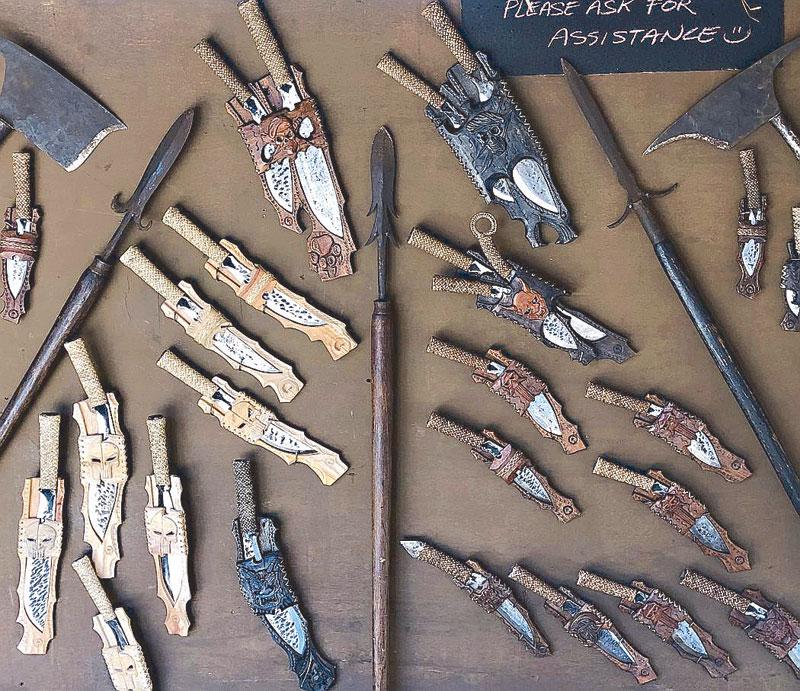
Get yourself a handmade knife forged by local blacksmiths.
Moving right along, we entered the Carver’s Shed, which focused on the generations-old wood carving skills of the Ifugao people, whose iconic creation includes the globally renowned Banaue Rice Terraces, a UNESCO cultural heritage site. While we were intrigued by the wooden scooter doing the rounds, talented artisans were hard at work as they continuously produced some exquisite handcrafted masterpieces.
Complex patterns and eye-catching textile – each with a folkloric tale – took center stage at the Weaver’s Hut, where an intricate weaving loom was manned by a lady from one of the ethnolinguistic groups, who demonstrated her mastery while busily using both legs and arms in perfect synchronization and cadence.
A plethora of handmade goods were available at the Artisan’s Corner, such as woven bags and shirts, earrings and necklaces inspired by original tribal designs and services such as one-of-a-kind tattoos and on-the-spot portrait sketches, done by artists from neighboring provinces.
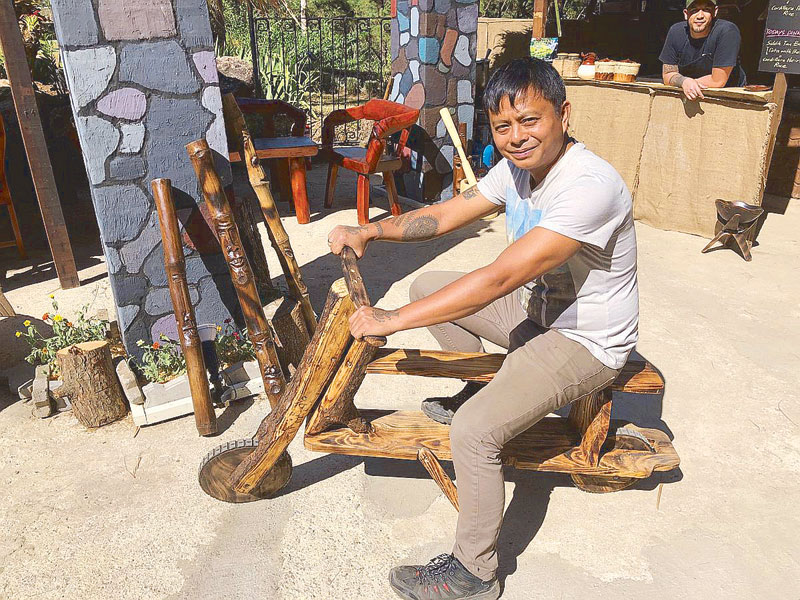
The wooden scooter actually runs and goes around the village. Photos by Edu Jarque
A traveling buddy sighed with relief as there was no need to drive to Benguet – hailed as the Salad Bowl of the Philippines – through the fabled Halsema Highway or Mountain Trail, as the Farmers Market offered an all-access pass to the freshest produce – from strawberries and flowers from the orchards of La Trinidad to the vegetables of the mountainsides of Atok and Buguias.
Though modern farming methods have been incorporated in their daily lives, lately the Benguet tillers of the land have gone back to their roots as they planted, nurtured and harvested plants which are now pesticide-free and organic.
“We want to give back to our neighbors, the weavers, the carvers, the farmers and the artists, by providing them with an opportunity and a venue to exhibit their creations, to impart their wonderful stories,” Cabrera shared.
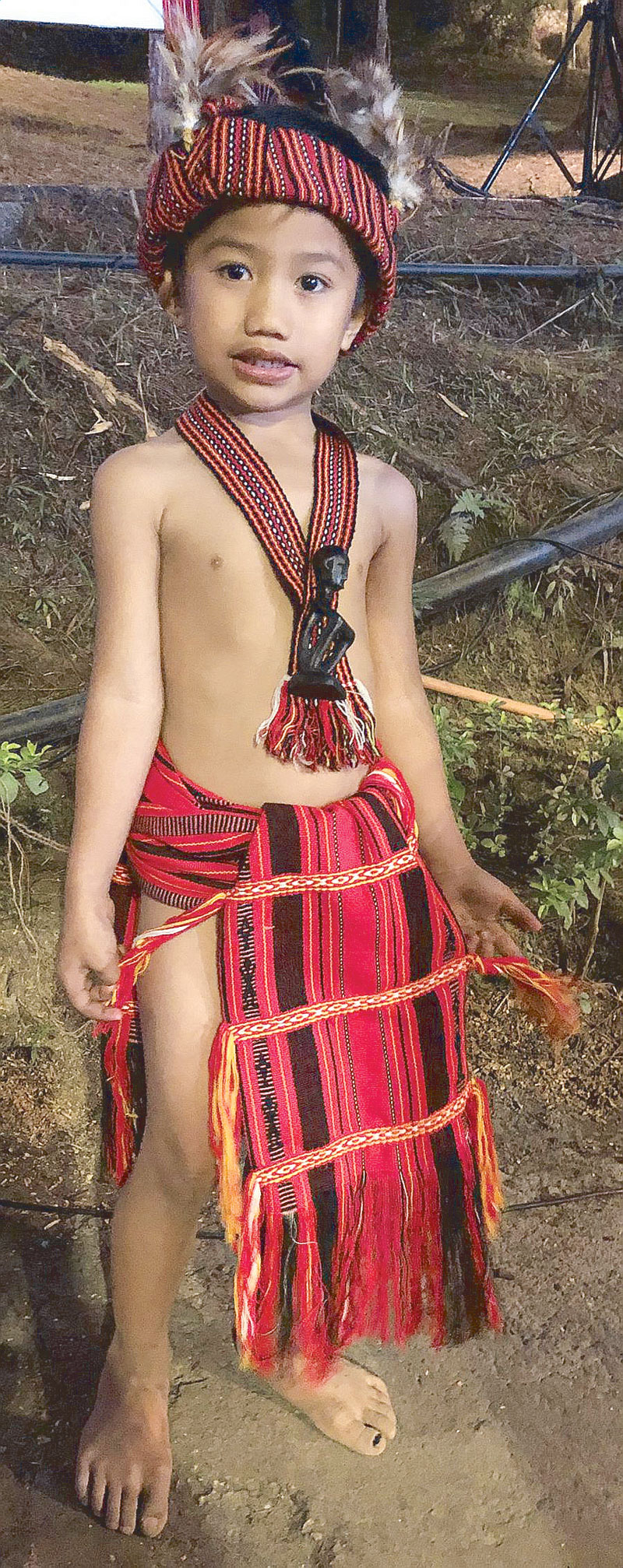
A boy in traditional garb.
“We believe that while we move forward, we need to preserve, nurture and promote whatever is intrinsic to the area, which is the soul of the Cordilleras,” Cabrera emphasized.
He also noted that part of the proceeds of the initiative will be donated to differently-abled children, specifically the Autism Hearts Foundation.



















